Stream Like a Pro: The Best Microphones for Streaming in 2025
A high-quality microphone for streaming will offer the right audio to enhance the viewer experience significantly. As a live streamer, you want your audience to be able to hear you clearly and enjoy the sounds of the game or other content you are sharing.
Investing in a good microphone for your streaming setup is one way to ensure high-quality audio and we will list some of the best microphones for streaming in 2025. These microphones have been designed with the needs of streamers in mind and offer superior audio quality that can help take your streaming to the next level.
So, read on to discover the perfect microphone for streaming needs.
Part 1. Types of Microphones for Streaming
When it comes to good streaming microphones, there are four different types to choose from, each with its strengths and weaknesses.
USB: These microphones are easy to use and can be plugged directly into your computer's USB port, making them a convenient option for beginners or those who need a quick and easy setup. They also come in a wide range of styles and price points.
XLR: XLR microphones for streaming require an audio interface to connect to your computer, but they offer superior audio quality and greater flexibility in customization and adjustment. XLR microphones are often used by professional streamers who want the highest quality audio possible.
Lavalier: Lavalier microphones are also a popular option for streaming, especially for those who need to move around or have their hands free. These small, discreet microphones can clip onto your clothing and pick up your voice clearly, even if you're not in front of your computer.
Shotgun: Finally, shotgun microphones for streaming are another type of directional microphone designed to pick up sound from a specific direction, making them ideal for capturing audio in noisy environments or isolating your voice from other sounds in your streaming area.
Each microphone type has its benefits and drawbacks, so think about your needs and preferences when choosing the best microphone for your streaming setup.
Part 2. Factors to Consider when Choosing a Microphone for Streaming
Are you thinking of buying microphones for PC gaming? Hold on and read the factors you must think of before getting one.
1. Audio Quality
The primary function of the best mic for streaming is to capture high-quality audio. When selecting a microphone for streaming, consider the frequency response, sensitivity, and signal-to-noise ratio. Look for microphones that produce clear and crisp audio that accurately captures your voice and any other sounds you want to include in your stream.
2. Microphone Type
As mentioned earlier, there are several microphones to choose from, including USB, XLR, lavalier, and shotgun microphones. Consider the streaming you will do and your specific needs when selecting a microphone type.
3. Connectivity Options
Depending on the type of microphone for streaming you choose, you may need additional equipment to connect it to your computer. USB microphones plug directly into your computer, while XLR microphones require an audio interface. Consider the available connectivity options and whether you have the necessary equipment to connect your microphone.
4. Polar Pattern
Microphones have different polar patterns determining the microphone's directionality. Do you want a microphone with a directional pattern that only captures audio from the front or an omnidirectional pattern that captures sound from all directions?
5. Budget
Microphones can range from under $50 to thousands of dollars. Determine your budget and the most critical features to select the best budget streaming mic.
Thus, choosing the right mic for streaming is crucial for producing high-quality audio that enhances the viewer experience. However, keep in mind there is no one-size-fits-all solution when it comes to microphones. The best microphone for one streamer may not work well for another.
6. Consider your specific needs and preferences and the type of content you will stream
- For example, a directional microphone like a shotgun microphone may be the best choice if you are streaming in a noisy environment.
- On the contrary, if you need to move around or have your hands free, a Lavalier microphone may be a better option.
- It's also vital to consider the type of content you will be streaming.
- If you primarily stream video games, you may want the best mic for gaming and streaming for capturing the game's sounds.
- If you are streaming music, you may want a microphone optimized for capturing the nuances of your voice and musical instrument.
Ultimately, the key is the best dynamic microphone for streaming that fits your specific needs and preferences and produces high-quality audio that enhances the overall viewer experience.
Part 3. The Best Microphones for Streaming
Here are eight of the best streaming microphones that represent some of the best options for streamers today.
1. Shure SM7B - XLR Microphone
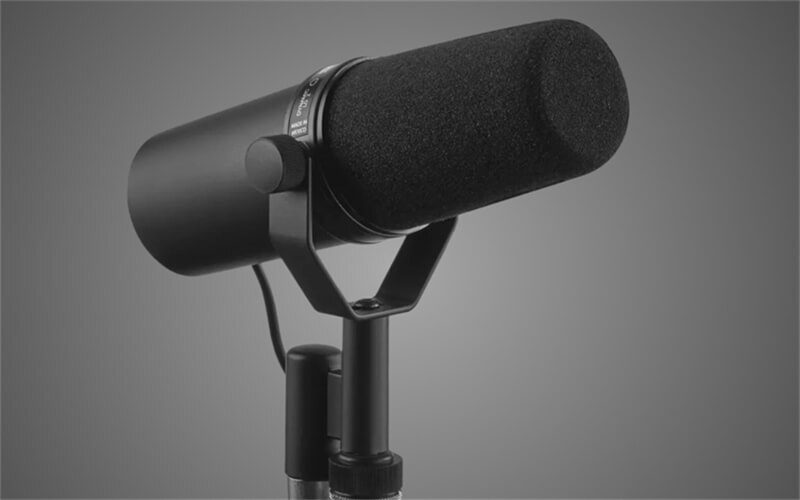
The Shure SM7B is a popular XLR microphone for streaming that delivers clear, warm audio with minimal background noise. Its polar pattern can be switched between cardioid and omnidirectional, making it a versatile option for different streaming setups.
Features:
- Switchable polar pattern (cardioid and omnidirectional) to control the directionality of the microphone
- Built-in pop filter to reduce plosives and sibilance
- Bass roll-off and mid-range boost controls to tailor the sound to your liking
- Internal shock mount to minimize vibrations and handling noise
- Frequency response range of 50Hz-20kHz for a balanced and natural sound
Pros:
- Excellent audio quality with a smooth and warm tone
- Versatile polar pattern suitable for a wide range of recording scenarios
- Minimal background noise, making it ideal for recording in noisy environments
Cons:
- Requires an audio interface with an excellent preamp to power the microphone
- Relatively expensive compared to other options
- Heavy weight and large size can make it challenging to position and transport
2. Blue Yeti - USB Microphone
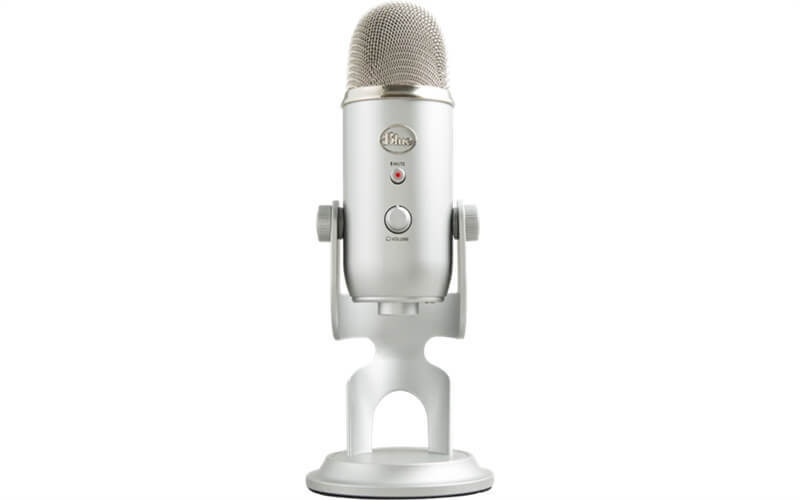
The Blue Yeti is the best USB microphone for gaming that offers excellent value for money. It features multiple polar patterns, including cardioid, bidirectional, omnidirectional, and stereo, making it a versatile option for different streaming scenarios.
Features:
- Multiple polar patterns (cardioid, bidirectional, omnidirectional, and stereo) to suit different recording scenarios
- A mute button and a headphone output with volume control for monitoring the audio in real-time
- Plug-and-play USB connectivity for easy setup
- Adjustable stand for flexible positioning
- A frequency response range of 20Hz-20kHz for a broad and accurate sound
Pros:
- Affordable and widely available
- Versatile polar patterns to capture sound from different directions
- Easy plug-and-play setup with no additional hardware required
Cons:
- The microphone stand and USB port are fragile
- Not suitable for high-end professional recordings due to its plastic construction and average audio quality
- Sensitive to background noise and room acoustics
3. Rode NT1-A - XLR Microphone
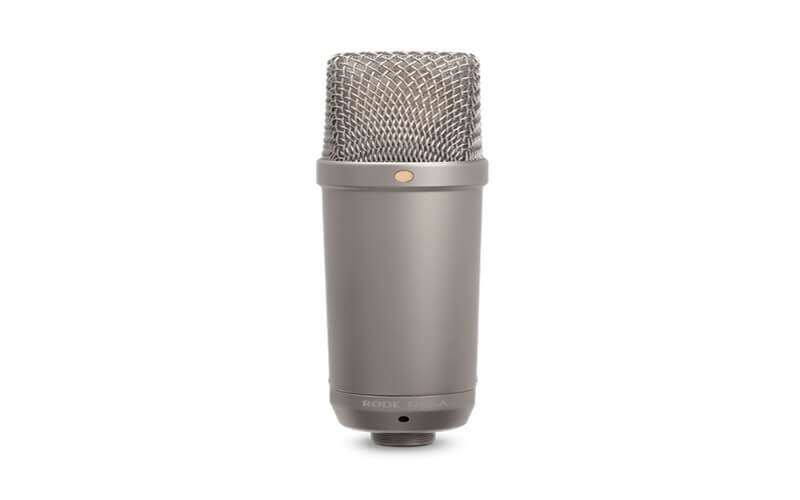
The Rode NT1-A is a professional-grade best XLR mic for streaming that delivers crisp, clear audio with low self-noise. Its large diaphragm and cardioid polar pattern make it ideal for capturing vocals and instruments with high levels of detail.
Features:
- Large diaphragm with a cardioid polar pattern for focused and directional sound
- Low self-noise of 5dB for clean and clear recordings
- High SPL handling of up to 137dB for loud sound sources
- Frequency response range of 20Hz-20kHz for a natural and detailed sound
- Internal shock mount and pop shield for reducing handling noise and plosives
Pros:
- Excellent audio quality with a neutral and detailed sound
- Durable and solid build quality with a 10-year warranty
- Ideal for recording vocals and instruments in a variety of settings
Cons:
- Requires an audio interface with phantom power to power the microphone
- It only has a cardioid polar pattern, limiting its versatility in recording scenarios
- Slightly less sensitive than some of its competitors
4. Audio-Technica AT2035 - XLR Microphone
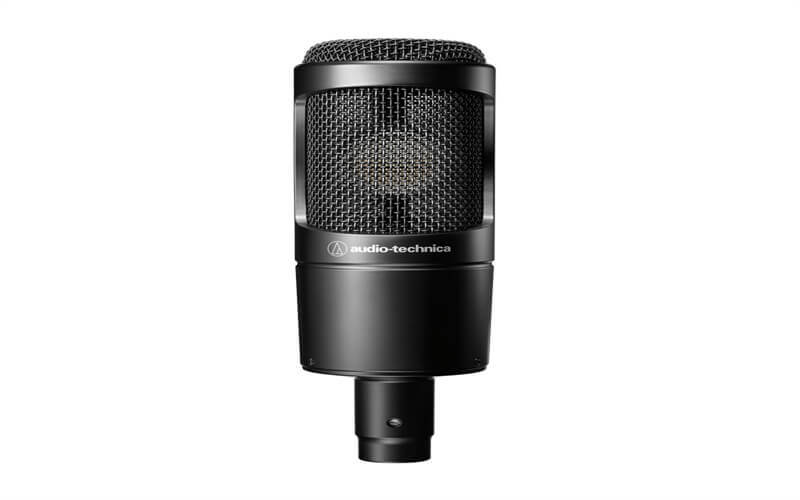
The Audio-Technica AT2035 is a versatile XLR cheap microphone for streaming that offers excellent value for money. Its cardioid polar pattern and switchable 80 Hz high-pass filter make it ideal for capturing vocals and instruments with precision and clarity.
Features:
- Cardioid polar pattern for directional sound capture
- Switchable 80Hz high-pass filter to reduce low-frequency noise and rumble
- 10dB pad for high SPL handling of up to 148dB
- Internal shock mount to reduce handling noise
- Frequency response range of 20Hz-20kHz for a clear and accurate sound
Pros:
- Affordable and widely available
- Excellent audio quality with a smooth and balanced tone
- Versatile features, including the high-pass filter and pad
Cons:
- Some users experienced loose connectors and switches
- Requires an audio interface with phantom power to power the microphone
- Not as detailed as some of its competitors in the same price range
5. Samson Go Mic - USB Microphone
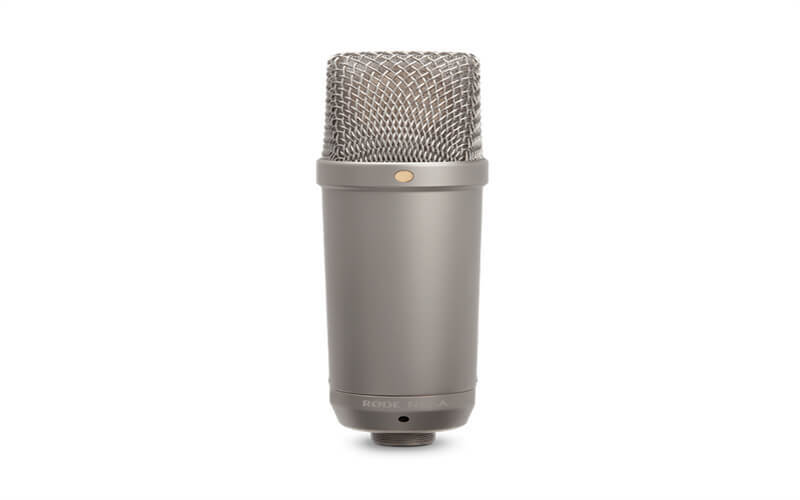
The Samson Go Mic is a compact USB microphone for streaming, perfect for streaming on the go. It features a cardioid polar pattern and a built-in stand, making it easy to position and adjust as needed.
Features:
- Cardioid polar pattern for focused sound capture
- Built-in stand for easy positioning and portability
- Compact and lightweight design for on-the-go recording
- Plug-and-play USB connectivity
- Frequency response range of 20Hz-18kHz for a balanced and natural sound
Pros:
- Extremely affordable and compact, making it ideal for on-the-go recordings and streaming
- Easy plug-and-play setup with no additional hardware required
- The decent audio quality for its size and price range
Cons:
- Limited polar pattern options and sensitivity, making it less versatile than other options
- Sensitive to background noise and room acoustics
- Fragile build quality and lack of shock mount can lead to handling noise and vibrations
6. Shure SM58 - XLR Microphone
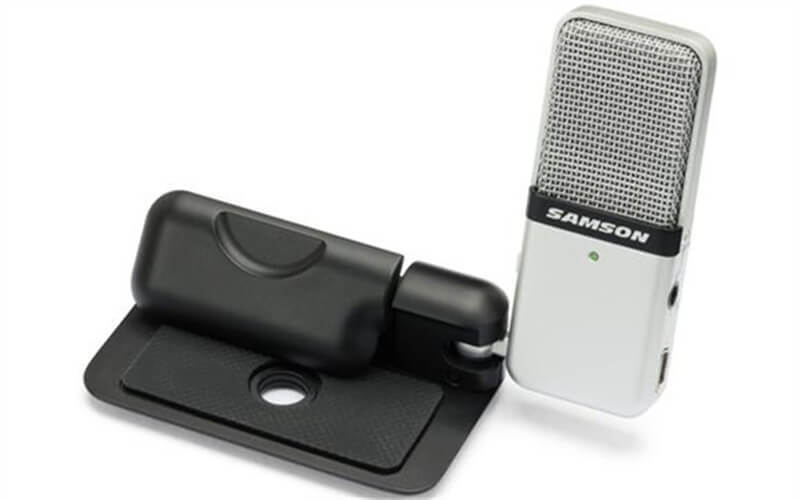
The Shure SM58 is a legendary XLR Shure streaming mic widely used in live performance and broadcasting. Its cardioid polar pattern and frequency response make it ideal for capturing vocals with clarity and warmth.
Features:
- Dynamic microphone with both USB and XLR connectivity options for flexible use
- Cardioid polar pattern for directional sound capture
- Built-in headphone output for real-time monitoring
- Touch panel controls for easy adjustments
- A frequency response range of 20Hz-20kHz for a natural and balanced sound
Pros:
- Versatile connectivity options with both USB and XLR connections
- Durable and solid build quality
- Adjustable polar pattern and gain settings for different recording scenarios
Cons:
- Slightly expensive compared to other USB microphones
- Issues with the touch panel controls
- Limited polar pattern options compared to different XLR microphones
7. Rode SmartLav+ - Lavalier Microphone
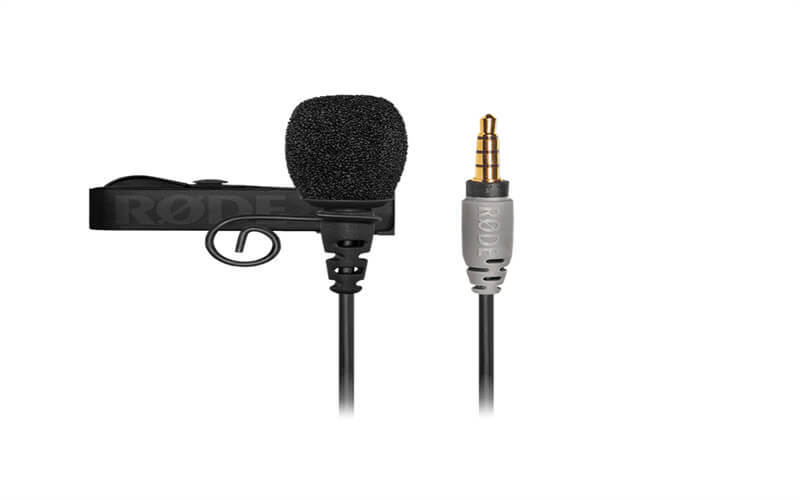
The Rode SmartLav+ is a Lavalier Rode streaming mic that works with smartphones and tablets. Its omnidirectional polar pattern and high-quality condenser capsule make it ideal for capturing clear and detailed audio in various streaming scenarios.
Features:
- Wireless Lavalier microphone system with 2.4GHz transmission and 128-bit encryption for secure and reliable audio
- Dual-channel receiver with a built-in screen for easy monitoring
- Multiple mic options, including a Lavalier mic and a compact transmitter with a built-in omnidirectional mic
- Compact and portable design for on-the-go recording and streaming
- Battery life of up to 7 hours on a single charge
Pros:
- Wireless freedom for flexible recording and streaming
- Compact and portable design with multiple mic options for different recording scenarios
- Easy to use with plug-and-play setup and built-in screen for monitoring
Cons:
- More expensive than some of its competitors in the same category
- Limited range and potential for interference in busy wireless environments
- Less polar pattern options and audio quality compared to some of its competitors
8. Blue Snowball iCE - USB Microphone
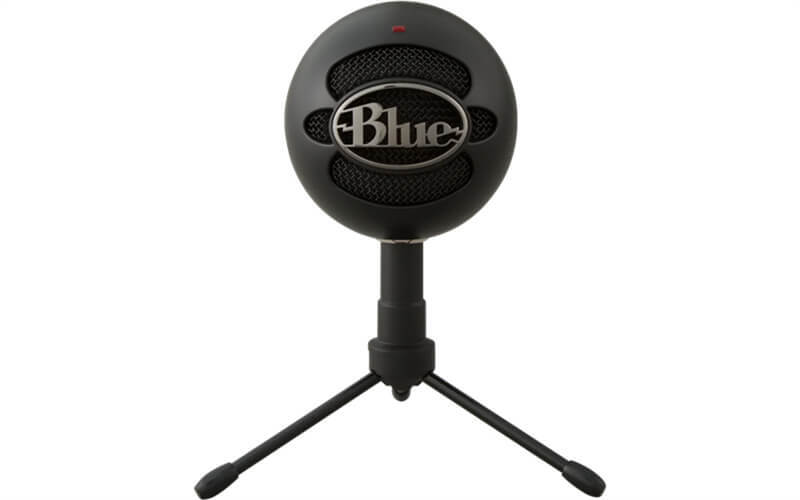
The Blue Snowball iCE is a budget-friendly top streaming microphone with a USB that offers solid audio quality and versatile polar patterns. Its cardioid and omnidirectional modes make it ideal for quickly capturing vocals, instruments, and ambient sounds.
Features:
- High-quality omnidirectional Lavalier microphone for capturing natural and balanced sound
- Suitable for use with wireless transmitters from Sennheiser and other brands
- High SPL handling of up to 142dB for loud sound sources
- Moisture-resistant design for use in humid environments
- Frequency response range of 20Hz-20kHz for a clear and detailed sound
Pros:
- Excellent audio quality with a natural and balanced sound
- Durable and moisture-resistant design suitable for outdoor and indoor use
- High SPL handling for recording loud sound sources
Cons:
- Requires a wireless transmitter, which can be an additional expense
- Slightly more expensive than a few others in the same category
- Limited polar pattern options and less versatile than some of its wired competitors
Part 4. Additional Equipment for Streaming
In addition to the best microphone for streaming, other equipment can improve the overall streaming experience. These include cameras, audio interfaces, headphone amplifiers, and pop filters.
Let us know each of them in detail.
1. Camera
One of the most essential pieces of equipment is a streaming camera. A camera allows viewers to see the streamer's face and reactions, adding a personal touch to the stream. A high-quality camera can provide clear and detailed video, which is especially important for streamers who play games or create content that involves a lot of visual elements.
OBSBOT Tail Air Streaming Camera is a 4K streaming camera that offers a range of features, such as NDI streaming, AI auto tracking, AI director grids, multiple connection methods, etc.
Features:
- 4K resolution and less noise in low-light conditions for detailed footage
- AI auto tracking, AI director grids, your all-in-one streaming solution
- NDI connection support makes you enjoy high-quality, low-latency, frame-accurate video shooting
- Multiple built-in interfaces to help integrate it seamlessly into your current live stream workflow
- Exclusive Mobile App for mobile and tablet devices
2. Audio Interface
It is a device that connects a microphone to a computer, allowing for better sound quality and more flexible connectivity options than a USB microphone. Audio interfaces can also provide additional features, such as preamps to boost the gain of a microphone signal and phantom power required for condenser microphones.
3. Headphone Amplifier
A headphone amplifier enhances the listening experience for the streamer. A headphone amplifier allows the user to monitor their audio more accurately, which is especially important for streamers who use multiple audio sources, such as game audio and microphone audio. A good headphone amplifier can provide additional features like volume control and EQ.
4. Pop Filter
Finally, a pop filter is a screen between the speaker and the microphone, which helps reduce plosives and other unwanted noise during speech. This is especially important for streamers who speak loudly or frequently use words that contain the letters "P" or "B." A pop filter can be easily attached to a microphone stand and is a relatively inexpensive accessory that can significantly improve the overall sound quality.
Part 5. Tips for Setting up and Using Microphones for Streaming
Setting up and using microphones for streaming effectively requires some knowledge and practice.
Here are some practical tips for streamers:
- Positioning: Place the microphone close to the streamer's mouth, but not so close that it picks up breathing or other unwanted noises. A good rule of thumb is positioning the microphone about 6-8 inches away from the mouth.
- Gain settings: The gain can pick up background noise, such as computer fans or air conditioning if the gain is too high. The microphone may not pick up the streamer's voice if the gain is too low. Experiment with different gain settings to find the sweet spot where the microphone picks up the voice without picking up unwanted noise.
- Noise reduction techniques: One common practice is to use a noise gate, which only allows the mic for streaming to pick up sound above a certain threshold. This can help reduce background noise when the streamer is not speaking. Another technique is to use a noise reduction filter in the streaming software, which can help eliminate unwanted noise from the microphone signal.
- Troubleshooting common issues: If the good streaming microphone is not working properly, check the connections to ensure everything is plugged in correctly. For the USB microphone, try unplugging it and plugging it back in. For an XLR microphone, check the cable and correctly connect it to the audio interface or mixer. If nothing works, try restarting the streaming software or computer.
- Practice and experiment: Streamers should take the time to experiment with different microphone settings and techniques to find what works best for them. They should also listen to their streams and recordings to identify areas where they can improve the sound quality. With practice and experimentation, streamers can achieve high-quality audio that enhances the overall streaming experience for their viewers.
Additional tips to optimize the audio quality of the selected microphones for the best streaming experience:
- Use the right microphone for the job: Make sure your chosen microphone suits your streaming type. For a noisy environment, a directional microphone, like a shotgun, is better than a cardioid microphone. A dynamic microphone might be better than a condenser microphone for a podcast or a roundtable discussion.
- Test your microphone before you start streaming: Before you start your stream, take a few minutes to test your microphone. Record yourself and listen to the recording.
- Use a pop filter: A pop filter is a screen that goes in front of the microphone and helps to reduce plosive sounds like "p" and "b," which can distort the microphone signal. This can help to improve the overall sound quality of your stream.
- Use noise reduction software: Programs like OBS and Streamlabs OBS have built-in noise reduction filters that you can use to improve the sound quality of your stream.
- Use headphones: When streaming, use headphones to monitor the audio to identify any issues with the sound quality and make adjustments as necessary.
- Adjust the microphone gain and volume levels: Experiment with the gain and volume levels to find the right balance between the microphone sensitivity and the overall volume of your stream. Try to avoid having the microphone too loud or quiet, as this can affect the sound quality of your stream.
Thus, optimize the audio quality of your selected best microphone for streaming and provide viewers with the best possible streaming experience with the above tips.
Conclusion
Hence, we learned high-quality audio is a crucial element in live streaming, and choosing the best microphone for streaming on Reddit can significantly impact the overall viewer experience. Thus, consider several factors, such as audio quality, microphone type, connectivity options, polar pattern, and budget. Streamers can choose from various microphones, including USB, XLR, Lavalier, and shotgun microphones, each with advantages and disadvantages.
In addition to streamer microphones, consider using other equipment to enhance streaming setups, such as cameras, audio interfaces, headphone amplifiers, and pop filters. OBSBOT Tail Air is an excellent camera option for streamers, with 4K resolution and NDI streaming.















